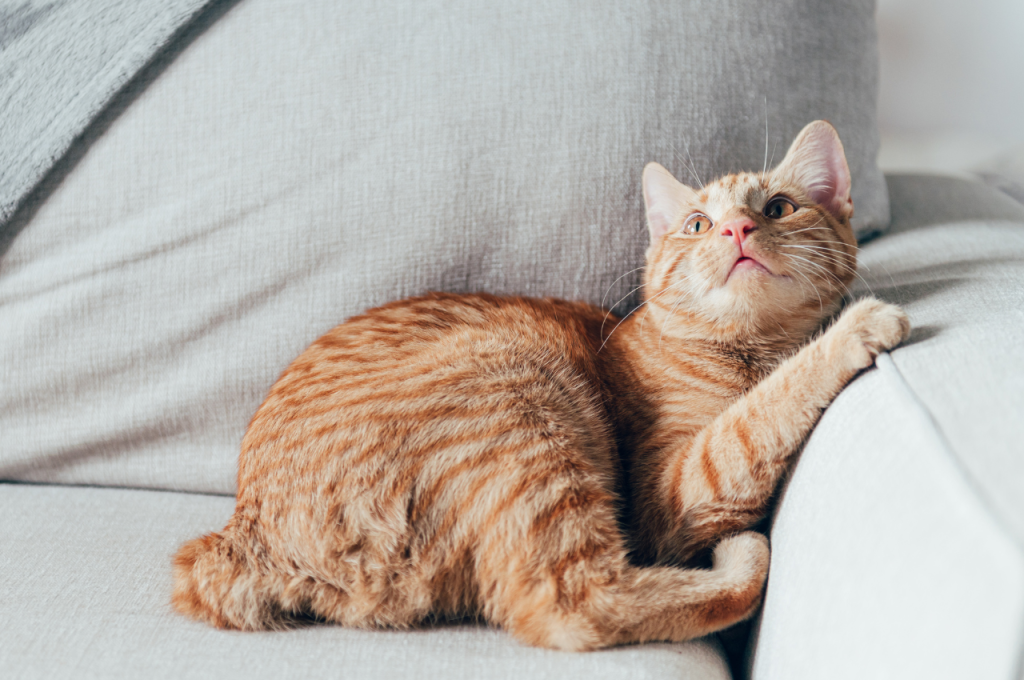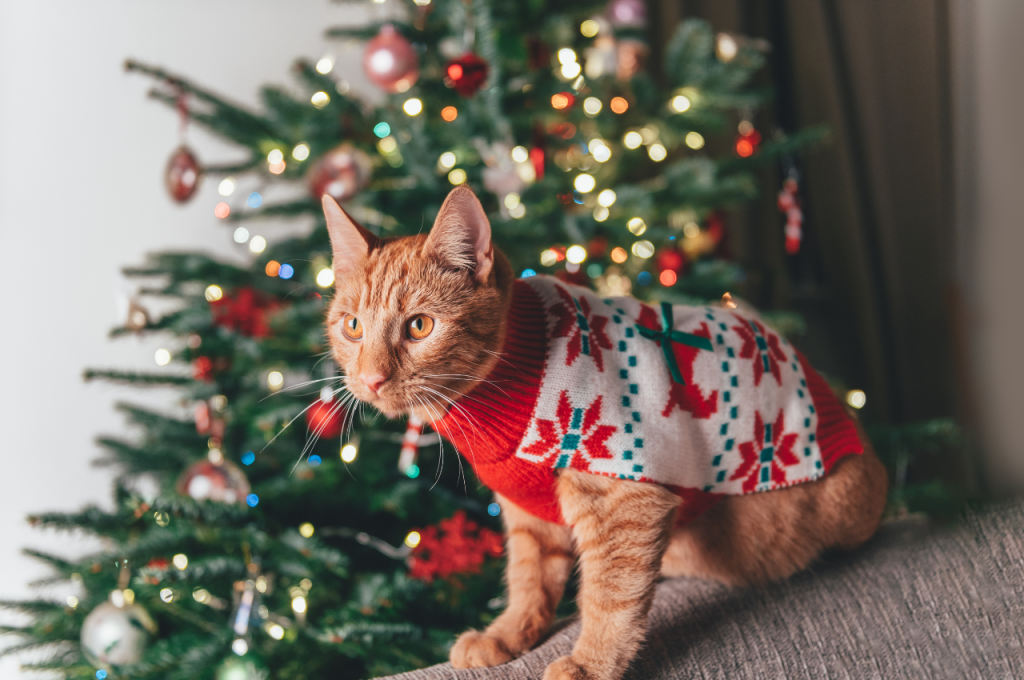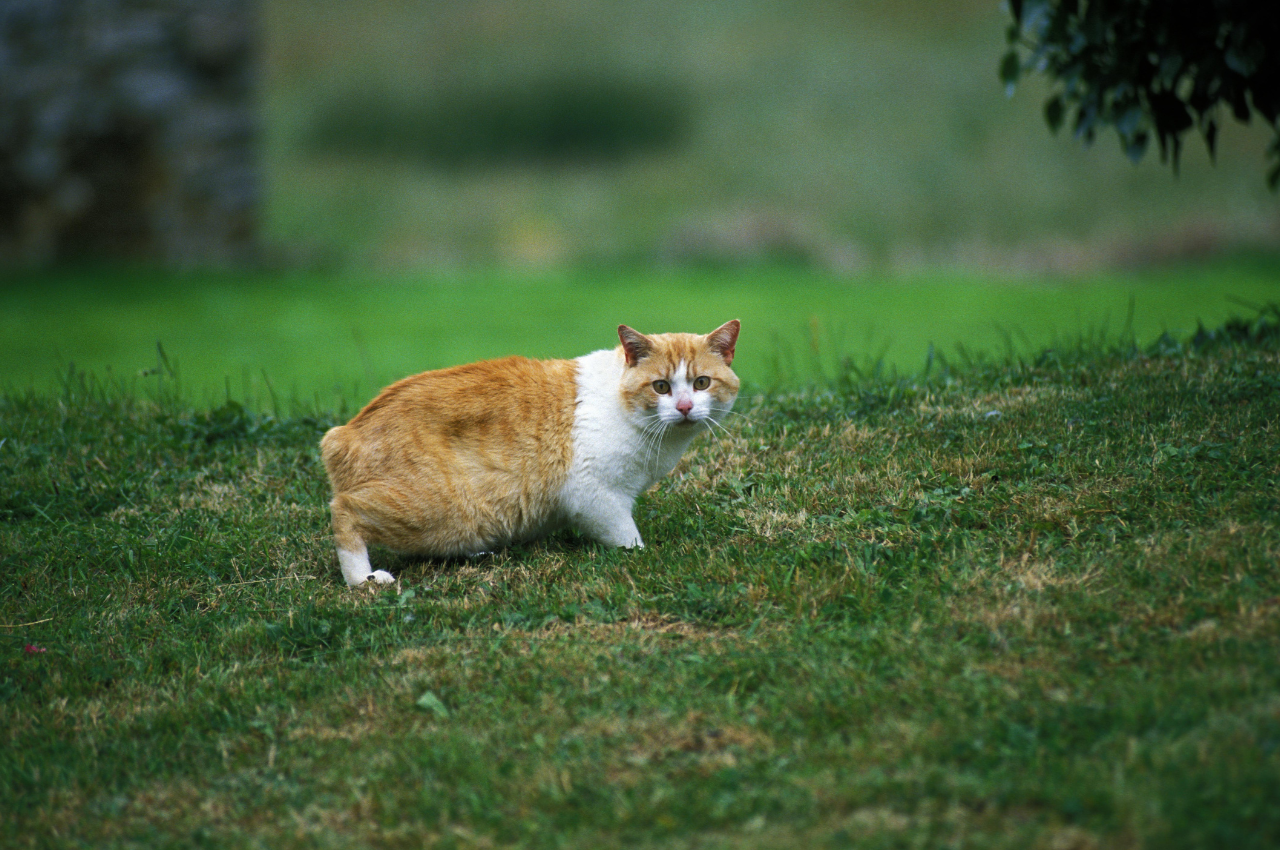Tailless cats, such as Manx and Japanese Bobtails, are generally healthy and lead normal lives. These cats are born with naturally short or no tails due to genetic mutations.
The lack of a tail does not typically pose any health issues for these felines. In fact, many tailless cats are known for their playful and affectionate nature. While some may have minor spine or bowel issues, proper care, and regular veterinary check-ups can help ensure the well-being of tailless cats. Overall, owning a tailless cat can be a unique and rewarding experience, as these cats are often cherished for their distinctive appearance and charming personalities.
The Tailless Cat Phenomenon
Have you ever wondered about the intriguing world of tailless cats? These unique felines, known for their lack of a tail or a short stub where it should be, have captured the attention of cat lovers around the globe. In this article, we will explore the phenomenon of tailless cats, delving into their origins, breeds, and physical characteristics. Let’s embark on a journey to discover the fascinating world of these enchanting creatures!

Origins And Breeds
When it comes to the origins of tailless cats, the story begins with a natural genetic mutation. The first recorded instance of tailless cats can be traced back to the Isle of Man, a small island in the Irish Sea. These cats, known as Manx cats, are believed to have originated from a spontaneous genetic mutation that occurred centuries ago.
The Manx cat, with its distinctive lack of tail or a short tail stump, quickly gained popularity due to its charming appearance and friendly nature. Over time, breeders began to intentionally select and breed these tailless cats, resulting in the establishment of the Manx breed.
As the phenomenon of taillessness spread, other breeds with similar genetic mutations emerged. One such breed is the Cymric, which is essentially a long-haired version of the Manx. Both the Manx and Cymric cats come in various coat colors and patterns, adding to their allure.
Physical Characteristics
The most apparent physical characteristic of tailless cats is, of course, their missing or shortened tail. While some tailless cats have a small bump or a few vertebrae at the end of their spine, others may have no visible tail at all. This unique trait sets them apart from their tailed counterparts, giving them a distinct silhouette.
In addition to their taillessness, tailless cats often have a rounded appearance and a compact build. Their hind legs can be slightly longer than their front legs, giving them a distinctive gait. These cats are generally muscular, agile, and well-balanced, despite the absence of a tail. It’s important to note that the lack of a tail does not affect a cat’s overall health or well-being. Tailless cats are just as healthy and capable as their tailed counterparts. They can jump, climb, and navigate their surroundings with ease.
In conclusion, the tailless cat phenomenon is a captivating aspect of the feline world. Originating from a natural genetic mutation, tailless cats have captured the hearts of cat lovers worldwide. With their unique appearance and charming personalities, these felines continue to bring joy and fascination to those who have the pleasure of sharing their lives with them.
Genetic Secrets Behind Taillessness
Key Mutations
One of the most fascinating aspects of tailless cats is the presence of key mutations that lead to this unique trait. These mutations primarily affect the development of the tail during embryogenesis. Specific genes are responsible for the absence of a tail, and understanding these genetic variations can shed light on the health implications of taillessness in cats.
Breeding And Inheritance
When breeding tailless cats, it’s crucial to consider the inheritance patterns of the gene responsible for this trait. Selective breeding can influence the likelihood of producing tailless offspring. Understanding the genetic inheritance of taillessness can provide valuable insights into the overall health and well-being of tailless cats, as well as the potential risks associated with specific breeding practices.
Health Concerns In Tailless Cats
Spinal Issues
Tailless cats, also known as Manx cats, are prone to certain health concerns, particularly related to their unique genetic makeup. One of the most notable health issues in tailless cats is related to their spine. Manx cats are born with a genetic mutation that causes a shortened tail or no tail at all, which can lead to spinal problems.
Mobility And Balance
The absence of a tail in tailless cats can affect their mobility and balance. Manx cats may experience challenges in jumping and balancing due to the lack of a tail for stability. This can lead to mobility issues and potential injuries.
Comparative Longevity And Vitality
Tailless cats can lead healthy lives, with comparative longevity and vitality. Despite their unique genetic trait, tailless cats are generally healthy and active companions. Regular veterinary care and attention to their specific needs can help ensure their well-being.

Lifespan Statistics
When it comes to the lifespan of tailless cats, it is important to consider several factors that can influence their longevity and overall vitality. While each cat is unique and may have individual health concerns, tailless cats are generally known to live just as long as their tailed counterparts.
According to available lifespan statistics, tailless cats, such as the Manx breed, have an average lifespan of 12-14 years. However, it is important to note that this is just an average, and individual cats may live shorter or longer lives depending on various factors. The lifespan of a tailless cat can be influenced by genetic predispositions, environmental factors, and overall care provided by their owners. By understanding these factors, cat owners can take steps to ensure their tailless feline companions live long, healthy lives.
Factors Affecting Health
Several factors can significantly impact the health and vitality of tailless cats. These factors include:
- Genetics: Taillessness in cats is a genetic trait, and some tailless breeds may have specific health concerns associated with their genetics. It is important to choose a reputable breeder who prioritizes the health and well-being of their cats.
- Spinal Abnormalities: Some tailless cats may have spinal abnormalities due to the absence of a tail. These abnormalities can potentially affect their mobility and overall comfort. Regular veterinary check-ups can help identify and manage any spinal issues.
- Weight Management: Maintaining a healthy weight is crucial for the overall well-being of cats. Tailless cats, especially those with Manx genetics, may be prone to weight gain. Providing a balanced diet and engaging in regular exercise can help prevent obesity-related health problems.
- Environmental Enrichment: Tailless cats, like all cats, thrive in an enriched environment that provides mental stimulation and opportunities for physical activity. Providing scratching posts, interactive toys, and safe outdoor spaces (if applicable) can help keep them mentally and physically engaged.
- Regular Veterinary Care: Routine veterinary check-ups, vaccinations, and preventive care are essential for maintaining the health of tailless cats. Regular examinations can help identify any potential health issues early on and allow for prompt treatment.
By considering these factors and providing appropriate care, tailless cats can enjoy long and fulfilling lives, just like their tailed counterparts.
Special Care For Tailless Cats
Special care for tailless cats is essential to ensure their overall well-being. Tailless cats, also known as Manx cats, have unique needs that require attention and consideration. While they are generally healthy and resilient, there are specific aspects of their care that warrant special attention.
Dietary Needs
Tailless cats require a balanced and nutritious diet to support their overall health. Ensuring a high-quality protein source in their food is essential for muscle development and maintenance. Additionally, supplementing their diet with omega-3 fatty acids can aid in promoting a healthy coat and skin. Consulting with a veterinarian can help determine the specific dietary requirements for tailless cats, taking into consideration any breed-specific needs.
Exercise And Play
Tailless cats benefit from regular exercise and play to maintain a healthy weight and stimulate their physical and mental well-being. Engaging them in interactive play sessions and providing toys that encourage movement can help prevent obesity and promote agility. Creating a stimulating environment with climbing structures and scratching posts can fulfill their natural instincts and provide opportunities for physical activity.
Real-life Stories
Tailless cats, also known as Manx cats, are generally healthy and active. While some may be prone to spinal issues, most live normal, happy lives. Responsible breeding and regular veterinary check-ups are essential for ensuring the well-being of these unique felines.

Owner Experiences
- Caring for a tailless cat brings unique challenges and joys.
- Tailless cats are known for their adaptability and playfulness.
Success Stories
- Tailless cats have thrived in loving homes.
- Owners emphasize the loving nature of tailless cats.
Conclusion
Tailless cats can be healthy and thrive just as well as their tailed counterparts. However, it is important to note that certain breeds, such as the Manx and Bobtail, may be prone to spinal and neurological issues. It is crucial for cat owners to provide proper care and attention to their feline companions, regardless of their tail length.
Ultimately, a cat’s health and well-being depend on various factors, including genetics, diet, exercise, and regular veterinary check-ups.
